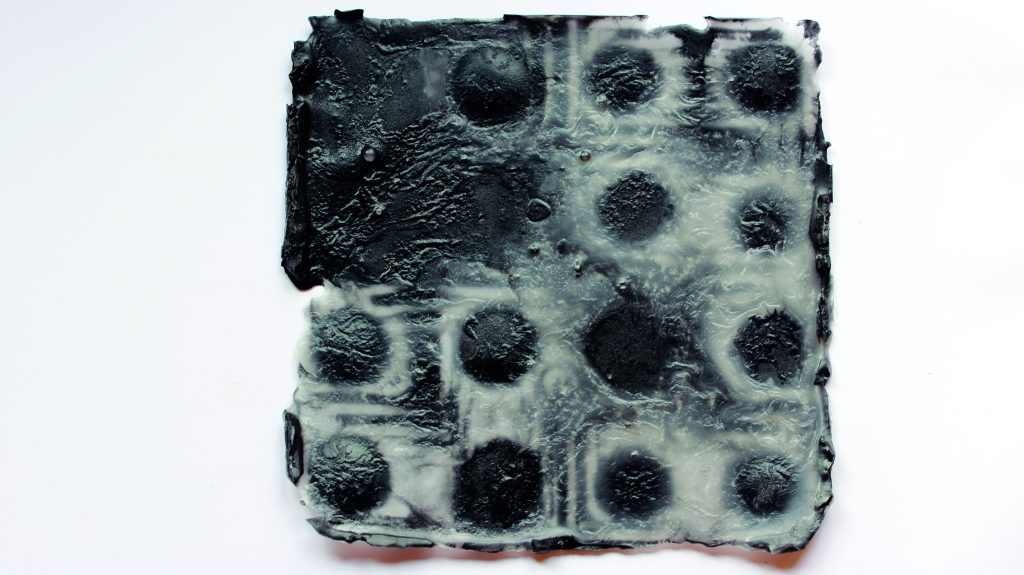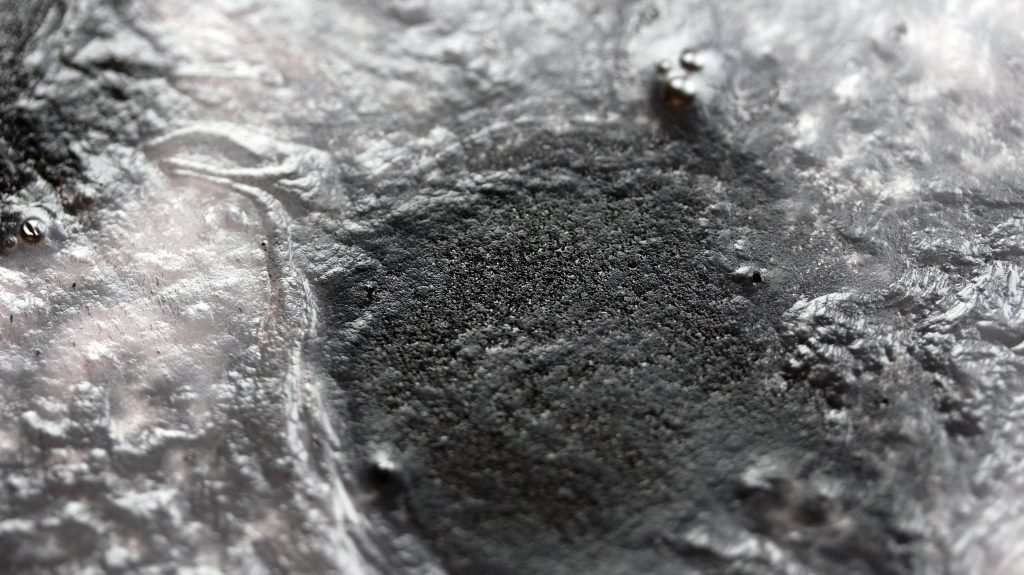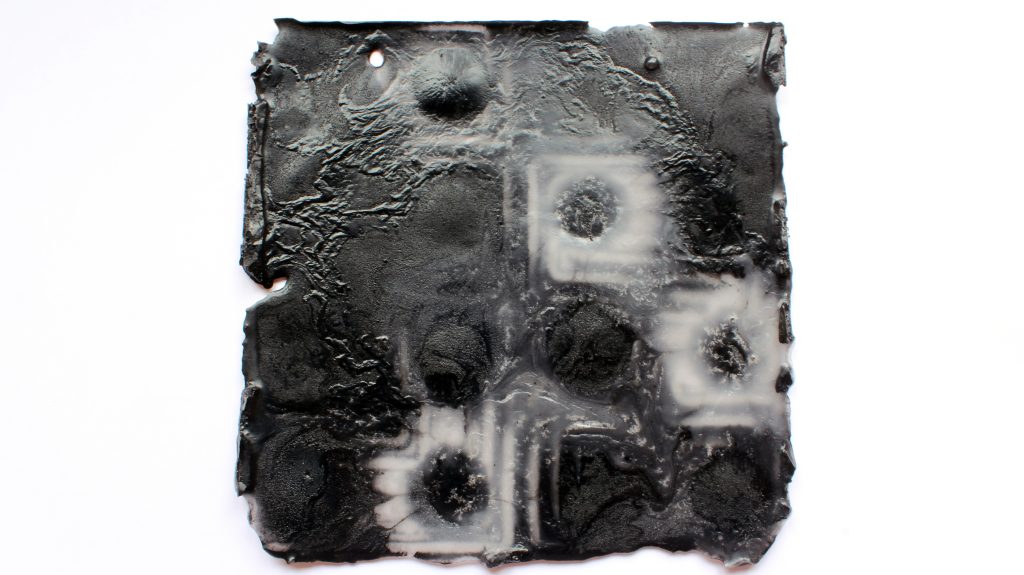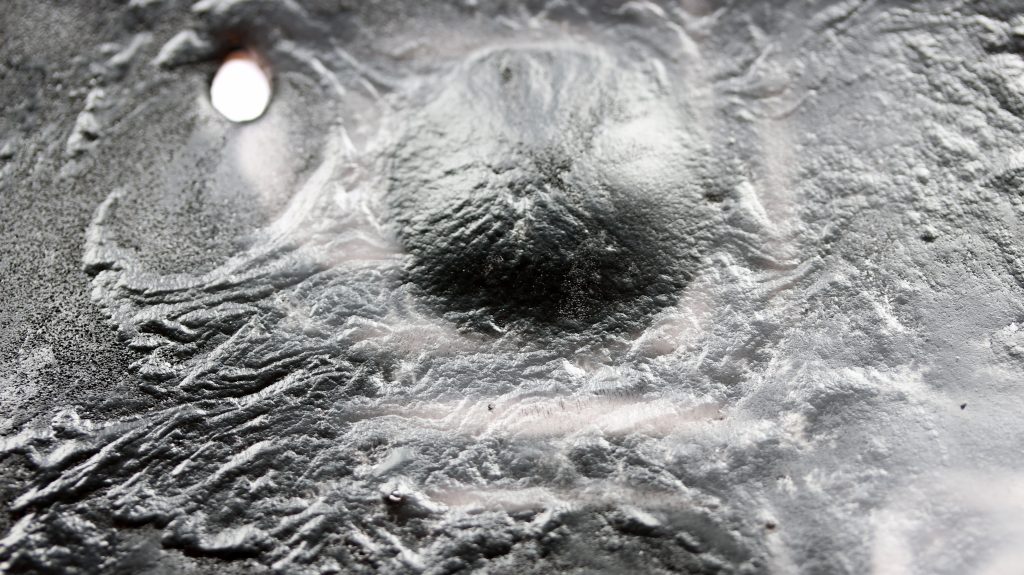Dr Adam Blaney, Dilan Ozkan, Dr John Hardy, Dr Emel Pelit, Dr Mariana Fonseca Braga
Significant waste, pollution and resource depletion can be associated with linear design and fabrication processes. This is because an object’s or structure’s material make-up (atoms, molecules, particles etc) cannot interact with/be radically updated post-fabrication. Nor can they be self-healed when damaged. Essentially, this project is about developing new design and fabrication processes that enable matter to be iteratively updated/re-programmed and self-healed when damaged, all at high resolutions. In doing so, truly adaptive objects and structures may become possible, which could significantly reduce waste and increase bespoke design properties over time for various application areas.
The project created materials samples (18x18cm) that can have multiple material properties (global patterns, compositions, opacities, rigidities, textures) iteratively re-programmed/updated at high resolutions. Throughout the project, the application area of medical prosthetics became a targeted area to inform our investigations. This was due to the nature of the set-up, slow material responses and in-situ responses not possible at this stage. The project consisted of two main activities: prototyping, to create a design and fabrication system, tangible user interface and material sample development that enable iterative interactions i.e. reprogrammable matter. Workshops, two online workshops were carried out with industry partners regarding medical prosthetics. The industry collaborators were Preston Hospital’s SMRC and GB para-triathlon. The workshops were extremely valuable in defining fundamental challenges within current prosthetics, interrelationships, future desires and what constitutes desirable material responses for patients, athletes, prosthetists and consultants.



